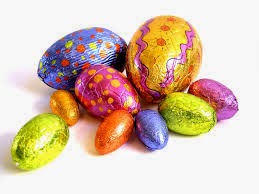Oh voi tutti italiani delusi delle disavventure estive in Brasile, segnatevi questa data nel vostro taccuino sportivo personale: 4 settembre 2014.
Comincia la nuova missione azzurra, quella che ci porterà verso l'Europeo di Francia 2016, con alla guida il pluricampione d'Italia Antonio Conte, passato da essere l'idolo della squadra più seguita in Italia a rappresentare l'allenatore di tutti.
Che il leccese riesca o meno in questo, sarà tutto da vedersi. Certo, il suo esordio ha lasciato tracce rilevanti.
Cinque dati meritano di essere sottolineati, a questo riguardo.
1- FASE OFFENSIVA, TORNIAMO A PUNGERE: L'Italia ritrova la via del gol. Per un attacco che aveva concluso il Mondiale brasiliano restando a secco per 180' consecutivi (non accadeva dal 1970 ad una fase finale del torneo), il 2-0 di Bari è ossigeno puro, per le bocche da fuoco nostrane.
2- MIRA RADDRIZZATA: Cosa forse ancora più importante, questa Italia pare provarci con più convinzione. Se l'ultima Nazionale prandelliana era riuscita ad inquadrare la porta dell'Uruguay una sola volta, ieri sera gli Azzurri hanno centrato lo specchio 5 volte.
3- UNA NAZIONALE TARGATA SUD: Per l'esordio vincente del primo CT proveniente dal meridione, non poteva che mettere la sua firma un'altra stella del sud. La prima rete della gestione Conte arriva per "piede" di Ciro Immobile. Il classe 1990, originario di Torre Annunziata, mette così a segno il primo gol in Nazionale maggiore.
4-ER MEJO DEL COLOSSEO: Con la rete su calcio di rigore, Daniele De Rossi è riuscito a tagliare ben due traguardi prestigiosi: gol n.100 di un giocatore giallorosso in Nazionale, nonché n.16 a livello personale con la casacca azzurra (nessun giocatore romanista ha fatto meglio).
5- BUONA LA PRIMA (TOCCATE FERRO!): L'Italia torna a vincere all'esordio di un nuovo commissario tecnico dopo 16 anni. Nel 1998 fu Dino Zoff, con identico risultato contro il Galles, e quasi nella medesima data (5 settembre).
E se i corsi e ricorsi storici valgono qualcosa nel calcio, potremmo essere di fronte all'inizio di un cammino molto interessante. Correva l'anno 1966: l'Italia veniva dal disastro del mondiale inglese, e ripartiva con in panchina il duo Herrera-Valcareggi. L'esordio fu vincente (il primo novembre, 1-0 all'URSS), e due anni più tardi arriverà il primo e finora unico Europeo vinto. Speriamo che ci porti bene.



















